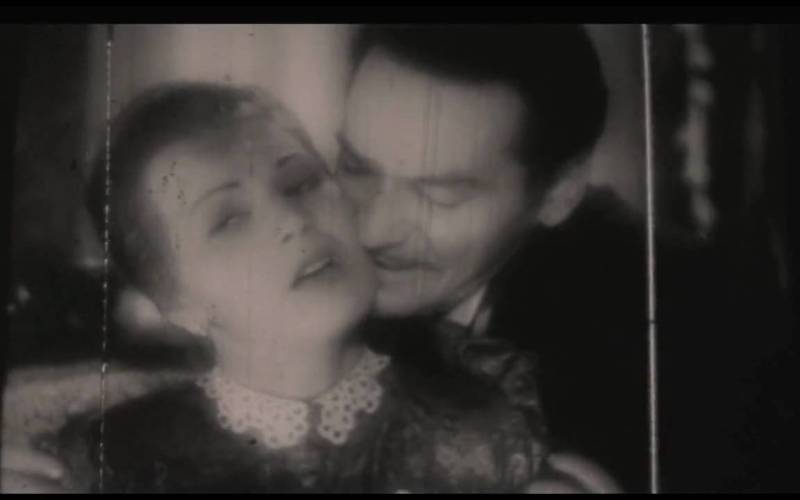‘Cinema Paradiso,’ directed by Giuseppe Tornatore, stands as an enduring celebration of cinema’s magical influence. Produced in 1988, this Italian masterpiece has etched its legacy into the hearts of global audiences, resonating far beyond its time and place of origin. At its core, ‘Cinema Paradiso’ is more than a nostalgic coming-of-age story; it is a profound homage to the art of filmmaking, emphasizing cinema’s power to shape lives, evoke emotion, and encapsulate memories.
The Framework of Metafilm: Film as a Protagonist and Driving Force
Central to ‘Cinema Paradiso’ is the famed projectionist, Alfredo, and his pupil, Salvatore, known as Toto. The narrative traverses several decades, with the Cinema Paradiso theater acting as both a literal and metaphorical heart of the town. Rather than serving as mere backdrop, the cinema itself emerges as a character, integral to the community and the protagonist’s identity.
The theatre transforms into a communal space where social barriers fade away. In lively and personal scenes, locals from diverse walks of life come together, bonded by shared laughter, emotions, and a collective sense of wonder in front of the shimmering screen. Tornatore highlights the community-building and unifying power of cinema, turning the act of watching films into a ritual that bridges age and social differences.
Cinema as Remembrance: The Heartfelt Essence of Nostalgia
Cinema Paradiso intricately intertwines recollection and yearning, using the methods of filmmaking to summon a sense of nostalgia for both Toto and the viewers. From the opening scenes that show Salvatore as a successful director troubled by his past, to the repeated theme of vintage film reels and celluloid, the process of recalling is equated with the experience of watching movies. The movie’s shifts in time—between Toto’s younger years, teenage days, and adult life—resemble how cinema frequently revisits and recontextualizes events, safeguarding them from the decay of time.
A pivotal example is the film’s closing montage, a collection of censored romantic scenes Alfredo had preserved for Toto. This montage operates as an artistic statement; it is both a gift and an act of reclamation, restoring lost kisses and passion to public memory. Such scenes reinforce film as a vessel for emotion that survives even when physical spaces like the cinema itself fade away or are destroyed.
Technical Homage: Crafting a Lyrical Cinematic Language
Technically, ‘Cinema Paradiso’ draws inspiration from and pays homage to traditional film styles. Tornatore incorporates visual storytelling with features reminiscent of Italian neorealism, using realistic performances and genuine locations. The technical artistry—from Ennio Morricone’s rich, emotive composition to the cozy, sepia-tinted cinematography—acts as a tribute to cinema’s legacy and its deep emotional influence.
Furthermore, the narrative is embedded with a theme of a film inside a film, nodding to masterpieces by filmmakers such as Visconti and Chaplin. Scenes from these movies are displayed on the Paradiso’s screen, providing both a visual lesson and a heartfelt nod to the extensive film tradition. This use of intertextuality anchors the tale in the collective legacy of cinema, honoring the craft of filmmaking and encouraging audiences to engage in a common cultural reminiscence.
Mentorship and Transmission: The Projectionist’s Role
One of the film’s richest layers is its meditation on mentorship and the transmission of cinematic love. Alfredo’s relationship with Toto exemplifies the passing of knowledge, passion, and appreciation for film. By teaching Toto the intricacies of projection—and, implicitly, the beauty of storytelling—Alfredo acts as both craftsman and philosopher. He imparts wisdom that extends beyond the technical, encouraging discovery, courage, and personal growth.
This process reflects how the history of cinema is maintained and shared with future generations. In the same manner that Toto inherits Alfredo’s love for films and eventually excels beyond him, cinematic traditions are continuously revitalized by new perspectives and advancing technology.
Socio-Political Themes: Restriction and Freedom
The film also intricately explores themes of censorship. Alfredo is instructed by the town priest to delete scenes deemed improper, especially any depicting romance or sensuality. This recurring act of excision offers commentary on the ways institutions seek to control narrative and emotion, yet passion finds a way to reassert itself. The return of the excised scenes in the finale reveals cinema’s radical potential to preserve truth, feeling, and rebellious joy.
By emphasizing these limitations—along with the freeing communal experience of attending movies—’Cinema Paradiso’ remarks on film as both a mirror of society and a gentle driver of cultural change. The process of viewing, it implies, can be transformative, providing views of different realms and emotional insights that might otherwise be out of reach.
Global Impact and Heritage
The global response to ‘Cinema Paradiso’ highlights its message that resonates with everyone. The movie received significant praise, earning the Academy Award for Best Foreign Language Film in 1990 and the Grand Prix at the Cannes Film Festival. Its influence can be seen in subsequent films; filmmakers like Alfonso Cuarón mention it as an inspiration, and its format is mirrored in movies that delve into themes of memory, nostalgia, and the transformative nature of art.
By blending intimate storytelling with a grand narrative about cinema’s capacity to connect and heal, ‘Cinema Paradiso’ appeals across cultures and generations. Its reverence for film is not merely thematic but embedded in its very form and structure, inviting audiences everywhere to rediscover the magic of moviegoing—the laughter, the heartbreak, and the fleeting moments of transcendence shared in darkness before the glow of light and shadow.
The film thus endures as a multilayered tribute, not only to movies as art but to movies as communal ritual, sites of learning, and echoes of human longing. Through this affectionate and complex lens, ‘Cinema Paradiso’ becomes cinema’s own story: a living archive of dreams, desires, and the power of visual storytelling itself.



:format(jpg)/f.elconfidencial.com%2Foriginal%2F971%2F3b4%2F9ee%2F9713b49eecb5e5eb458ccdeab8d07014.jpg?w=360&resize=360,240&ssl=1)
